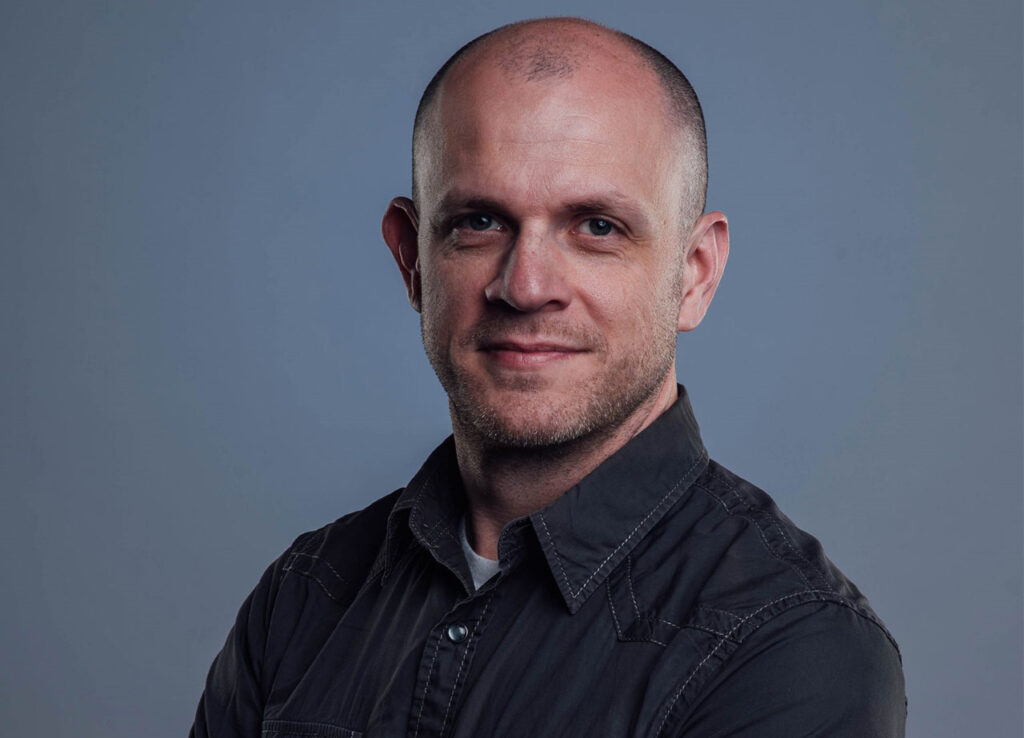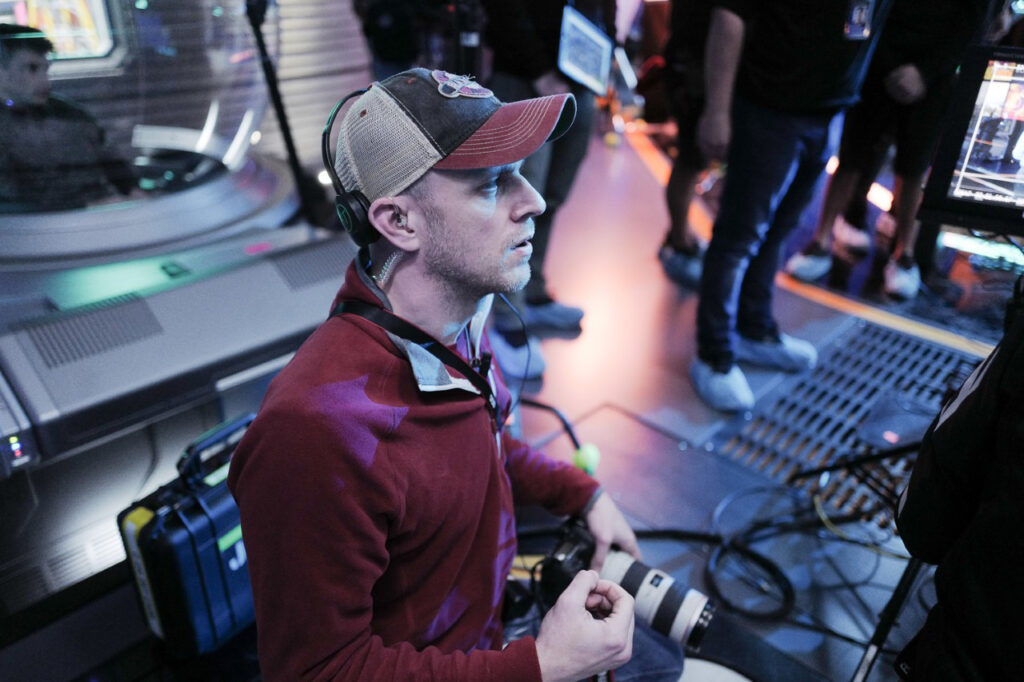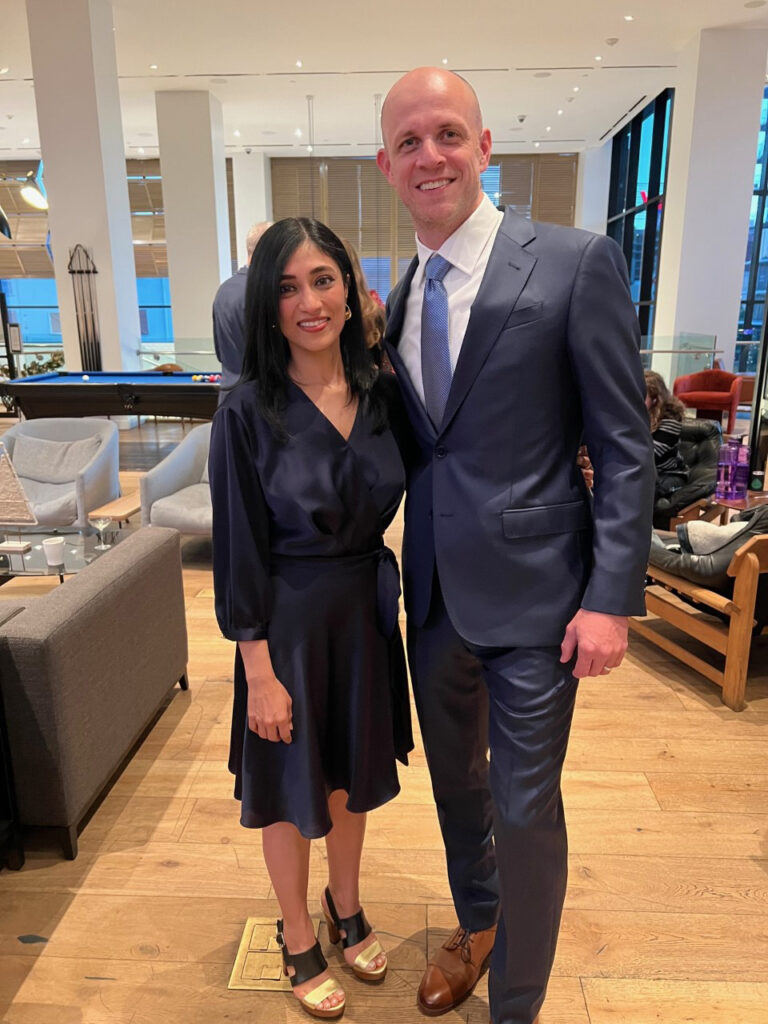By Isabella Cook
Academy of Art University School of Animation & Visual Effects (ANM) alumni made literal waves with their work animating and creating visual effects for the Oscar-winning “Avatar: The Way of Water.” Pavani Rao Boddapati (M.F.A. 2005), Dan Cox (M.F.A. 2006), and Andry Jong (M.F.A. 2012) worked alongside Director James Cameron and industry greats to awe audiences with stunning effects work on what is now–worldwide–one of the top-grossing films of all time.
“We have Academy alums working on almost all of the major motion pictures, and it’s very rewarding because it feels like we’ve done our job right,” said 3-D ANM Executive Director Catherine Tate. “Seeing the success of our students…it’s seeing them achieve their dreams, and they were able to do so with a good foundation to grow from their time at the Academy.”
Building the world of the Na’vi

The creation of “Avatar: The Way of Water” required an immense amount of attention to detail and a talented team with highly diversified and specific skill sets. From simulating hair underwater and crafting the Na’vi environment to working with underwater motion performance capture and virtual production, each alum’s focus played a significant role in bringing the long-awaited film to the screen.
Pavani, a visual effects supervisor at Wētā FX, spent a few years spearheading Wētā’s Water Task Force, which developed the technology and workflow for the 2225 water shots for “Avatar: The Way of Water.” This task force was comprised of highly skilled experts from various departments at Wētā FX who were instrumental in the extremely realistic water we see in the movie. Pavani later transitioned to supervising 500 shots in the Metkayina village and the underwater reef, including several underwater diving and swimming sequences.
“In the first few years, we formed this group of experts of various skills, and we were all collaborating on the water that we had to deliver shots for in just a few years,” explained Pavani. “We knew what we had to do, and we were in communication, showing our tests, and all of that work is what helped us get off the ground. When production started, we knew exactly how to approach it, which is how we were able to produce higher quality visuals.”
This Water Taskforce’s expertise and dedication made it possible to focus on and emulate even the smallest of details, down to each and every individual drop of water in the metaphorical ocean of visual effects. This attention to detail was integral in avoiding the uncanny valley in the photorealistic animation and visual effects of “Avatar: The Way of Water.”
“You can see every drop of water on [a character], how fast it goes down, how it slows down in peach fuzz, and how it drips and propagates and ripples,” explained Pavani.
As the on-set visual effects supervisor for Wētā FX, Dan’s experience on the set of “Avatar: The Way of Water” was a little different from his colleagues. In addition to supervising parts of the virtual production, Dan’s duties included more unusual tasks, like when James Cameron introduced him to filmmaker Steven Spielberg with the instruction, “Explain how this s–t works.” Dan also had the unique responsibility of running members of the cast through a FACS (Facial Action Coding System) session, which assisted in the building of the film’s new state-of-the-art 3-D facial rig.



A memorable moment for Dan was getting to work with Oscar-winning actress Kate Winslet, who arrived on set about a year into filming. “It’s just different when you have these one-on-one hours-long sessions, and I just geeked out over the fact that it was Kate Winslet,” said Dan.
He continued: “[S]he’s sweet and a real pro. We found out a few months later [Kate] was coming back. I thought she wouldn’t even remember me, but the elevator comes up, and out comes Kate, and she turned and ran and gave me a hug and said, ‘Darling!’—it was one of the greatest moments of my life.”
Part of Dan’s duties included VFX supervision of both live-action filming and performance capture created in the water tank. The tank was constructed in order to provide the essential element of water for the film’s set as well as allow underwater performance capture rather than a dry-for-wet solution.
“For the underwater performance capture, we built a huge aboveground tank… on one side of it was a giant wave machine that was essentially a hydraulic plunger, and we had to figure out the cadence to create a standing wave because we needed to create a perfect resonance to make it so the actors wouldn’t get pushed against the wall,” explained Dan.
The aboveground tank was built based on a number of digital fluid dynamic simulations created by the Wētā FX team to aid in the design of the tank. Dan shared that it was fairly “intimidating.”
“We were all a little bit afraid of what would happen the first time the practical effects team ran the wave machine, so we opened up the elephant-sized doors to the sound stage to an open parking lot and a golf course,” said Dan. “Everyone went up into the rafters so no one was on the ground, and we turned [the wave machine] on remotely so we could see what would happen and, worst case scenario, all the water would go out and water the golf course.”

“Actually, the giant pool bit was true,” said Andry, who worked with Dan on the film. “We had some of our computers stationed around the pool, and every single time they’d do a scene where they’d run the pool, it was really loud since they were literally simulating ocean waves. It was definitely an interesting experience.”
Andry’s role as a pipeline technical director (Pipeline TD) in “Avatar: The Way of Water” saw him working as a software engineer for the Production Engineering department for Wētā FX. In other words, he represented Wētā FX in virtual production at Lightstorm Entertainment and supported the making of the movie in two capacities. First, he developed tools to help the virtual production team achieve their vision, and second, he helped ensure the software ran smoothly.
“In virtual production, the performances are recorded digitally. [My team and I] had to make sure that everything ran because it is incredibly important that everything is captured and saved properly so that all the information we capture on set can be passed along to the post-production team at Wētā FX,” explained Andry. “I attended virtual production sets in cycles with my team, and during my shift, I would be on set with the rest of the virtual production crew. I had a computer on set that would monitor the activity of the machines that were capturing the actions, and if I saw something suspicious, I would warn them about potential slowdowns or crashes. When crashes do inevitably happen, I would try my best to salvage the information as much as I could. We didn’t want to lose the award-winning performances of these actors if we can help it.”
“I didn’t know Dan was a fellow alum while I was working there — I had always known him as a superstar, and getting to work close to him was an honor,” added Andry. “One of my duties was to create tools for the virtual production artists, and one of the ideas for the tools we wrote for ‘Avatar’ came from Dan. He was amazing; you can see how he got there, and you can absolutely see how he became a VFX supervisor. He has such great ideas and is always passionate and positive.”
Words of advice

After working on some of the most successful films in recent years, each of these alums had words of wisdom to offer to our aspiring animators and visual effects artists—ranging from the importance of collaboration to outworking the competition.
“First, the most important advice is collaboration. VFX is not a solo effort, and Wētā FX is able to deliver these amazing visuals through collective effort. As a student, team up with other students and work on producing a common goal,” advised Pavani. “The second most important is critique; it’s very important to be able to take critique, give it, and self-critique. It’s hard because nobody likes criticism, but it’s important to keep an open mind and remember that getting feedback from someone can only make it better.”
“If you’re still looking at your work and wondering if they’re going to hire you or not, they’re probably not going to hire you,” added Dan. “You need to outwork anybody and everybody else and be so good they can’t not hire you.”
“For Academy students, my biggest advice is to make use of their peers,” concluded Andry. “I think there are a lot of talented and very creative people at the Academy, ones with unique ideas who might be facing unique challenges and, especially if you want to be a pipeline artist, help build the tools to help [your peers] succeed because, at the end of the day, that will be what you do in the industry.”
